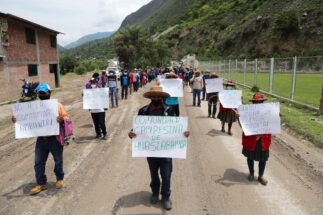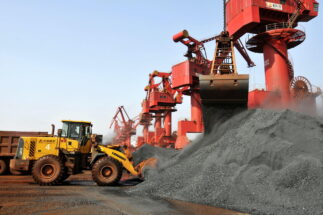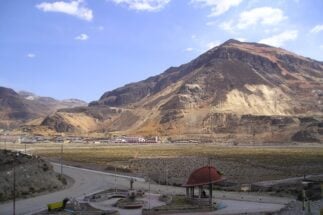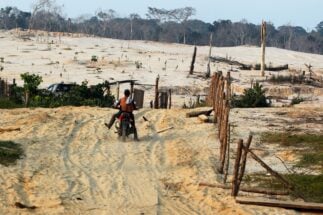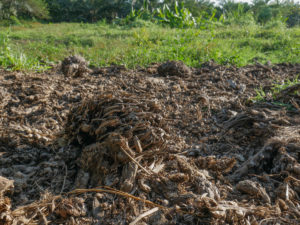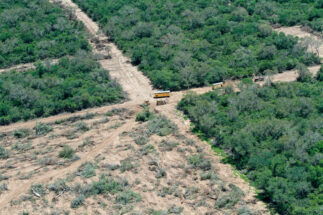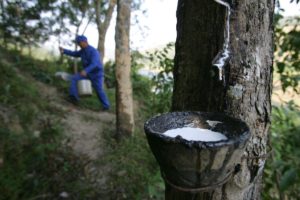Once again, Peru’s Las Bambas copper mine, one of the world’s largest copper mines, is in the news for the wrong reasons. As part of a protest, last week community members occupied company land at the site, operated by China Minmetals Corporation (China MMG), causing it to suspend operations again. Protestors allege that China MMG, which contributes an average of 1% to Peru’s GDP through the project, failed to comply with various agreements.
Las Bambas seems to live in constant conflict. In March, communities demanding better living conditions blocked the road along which the ore is transported. Blockades on the same road also forced the mine’s closure at the end of 2021.
So why does the operation cause so much friction?
Las Bambas’ irregular road
Las Bambas traverses a complex geographic space. Its area of direct social influence is between the provinces of Cotabambas and Grau, in the southern region of Apurímac, where four in ten of the near half a million inhabitants live in poverty. For the copper concentrate produced at the mine to reach the coast for export, it must be transported along the Corredor Vial Sur, a 325-kilometre road that bisects 37 communities’ territories across Cotabambas and Grau, Chumbivilcas and Espinar in neighbouring Cusco department and, to the west, Caylloma in Arequipa department.

The use of the corridor has generated a variety of complaints. Since President Pedro Castillo took office in July last year, communities and residents have raised complaints on a number of issues, ranging from compensation payments for noise and dust pollution caused by passing trucks, to demands for employment operating the vehicles that provide services to Las Bambas.
Communities have resorted to blocking the corridor in recent months. At the end of 2021, a blockade in Chumbivilcas, 200 km from the mine, halted operations. The mining union estimates that each day of a blockade at Las Bambas costs US$9.5 million.
In February, the community of Ccapacmarca, in Chumbivilcas, blocked the road around 100 km from Las Bambas, calling for compensation. In March, the community of Urinsaya, in Espinar, some 250 km from the mine, blocked the road for similar reasons. The company said it has lost more than 400 days of transporting materials since 2016, when it began operations.
Las Bambas’ complex problems
A January 2022 report by Peru’s Ombudsman, the body tasked with protecting citizen rights, reported nine active socio-environmental conflicts over Las Bambas – five in Apurímac and four in Cusco. From the first in 2011 to today’s disputes, all relate to different claims.
The most recent conflict occurred in July 2021. Six communities and other groups in Chumbivilcas called for Resolution 372-2018-MTC, the law designating communal roads as a higher-level national route, not to be recognised.
The Presidency of the Council of Ministers (PCM), the prime minister’s office, has also monitored the situation along the mining corridor. A document it published this January found nine cases of social conflict in the area, although not all mention Las Bambas.
At the end of March, another front of conflict emerged, as the community of Huancuire in Cotabambas rejected the government’s approval of the expansion of the mine that same month. The decision would allow mineral exploitation at Chalcobamba, one of Las Bambas’ three deposits, and could boost annual production to around 400,000 tonnes of ore.
At present, ore is extracted from Ferrobamba, which has been operating since 2016. But the expansion and its integration with the entire mining complex requires approval of a fourth Modification of the Environmental Impact Assessment (MEIA), which was initiated in June 2020 and is still pending. The EIA and MEIA must also be presented for public consultation.
MMG’s negotiation style encouraged more protests, and not fundamental solutions
José de Echave, of the NGO CooperAcción and a former vice-minister in Peru’s Ministry of Envrionment, said the problems at Las Bambas are complex, and result from a climate of high expectations.
“There are a large number of different populations, hamlets and peasant communities. Some have economic expectations, others have environmental concerns. Some aspire to be part of the value chain, others to jobs,” de Echave said. “Some are claiming compensation for the passage of the road, which went from being a communal trail connecting communities to a national road in an accelerated process, without complying with due process. In other words, there was no negotiation with the communities.”
Cynthia Sanborn, a researcher at the Universidad del Pacífico in Lima, who focuses on extractive industries and Chinese investments, agrees that unmet expectations are a factor, adding that road blockades and prolonged protests reflect different complaints. Not all are unique to Las Bambas.
The mistakes of previous governments in approving changes to the ore transportation plan “had such an impact”, according to Sanborn. The errors of the company, which she said has a ‘transactional style’ of negotiation, “yielded to the pressures of the blockades in such a way as to encourage more protests, and not fundamental solutions.”
There has also been a consistent lack of a state presence in the area due to a high turnover of officials and a lack of training. External advisors, who come from a variety of organisations and approach communities offering services – often presenting themselves as aligned with their cause – can end up exacerbating divisions to seek immediate economic benefits, Sanborn adds.
Political instability and economic uncertainty
Richard Arce, a former congressman for Apurímac and a candidate for the region’s governor, said the state and the company must address the range of claims, since the mining corridor and, in particular, the Chumbivilcas area, have become national priorities. He insists that Apurímac and Cusco need swift solutions, otherwise the regions will witness “a confrontation between brotherly communities”.

In recent months, authorities from both regions have held conflicting positions on the scope of the claims over Las Bambas and its economic benefits. Baltazar Lantarón, governor of Apurímac, said that laws pertaining to royalties and the mining canon – a mechanism in which 50% of the total income tax paid by extractive companies is transferred to the host region – must not be violated to the detriment of the region. This year, Las Bambas started to pay income tax and is expected to reap large economic benefits.
Lantarón’s comment comes as Cusco communities wish to be considered part of the project’s direct area of influence, something which he is against. Cusco governor, Jean Paul Benavente, however, agrees. “No one is going to touch the royalties or the canon [of Apurímac],” he said.
In Apurímac, there is concern about blocking the transit of copper. According to Arce, the region loses 3.5 million Peruvian soles (US$900,000) each day there is a blockade. Furthermore, Las Bambas accounts for 78% of regional GDP. For this reason, Lantarón has proposed building Apurímac’s so-called trans-Andean economic corridor, an alternative route that would not pass through Cusco.
Arce said the proposed trans-Andean corridor is “a strategic response” to the risk of blockades along the route. But De Echave urges caution.
“As long as the underlying issues are not addressed, and it is simply thought that the solution is to create a new road, the problems will be transferred to this new road and to the populations in the area of influence,” the former vice-minister said.
Instability prevails
Ruth Luque, a congresswoman for Cusco, questions the signing of specific commitments with communities or districts. She believes that there should be a coordinated vision throughout the entire corridor, from Apurímac to Cusco. “This is lacking, but this strategy requires the involvement of authorities at different levels – local, provincial and regional – and to stop looking [at the situation] from an overly territorial perspective,” she said.
Arce said: “The government does not have a clear policy, it is not interested in dealing responsibly with the management of socio-environmental conflicts, especially in the mining corridor, and the damage is immense.”
For Sanborn, the president and his executive have not demonstrated any leadership, strategy or clear priorities. “Nor have they placed people with knowledge and training in conflict management or regulation of extractive activities in key positions,” she said.
In his first eight months in office, Castillo has had four cabinet chiefs and 45 different ministers in charge of Peru’s 18 ministries. Numerous changes of lower-ranking officials add to ongoing political instability. Regional and municipal elections in October could destabilise the situation further.
In this context, Sanborn said, “frustrations arise on all sides. And the disillusionment is especially noticeable in the communities directly affected by mining, as they voted overwhelmingly for Castillo with expectations of social change in their favour.”
Diálogo Chino requested comments from PCM and MMG Las Bambas, but they had not responded by the time of publication.
